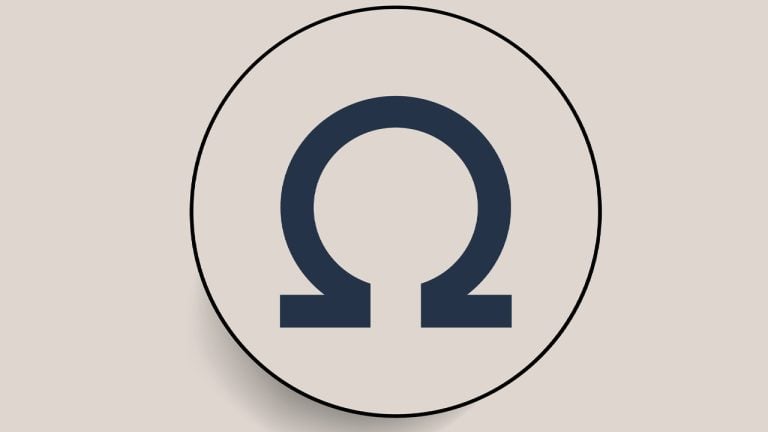 On Friday, October 21, a malicious entity siphoned 30,437 OHM tokens from the Olympus DAO after finding a loophole in the rebase project’s smart contract. Following the exploit, the blockchain security and data analytics company, Peckshield, detailed the hackers stole close to $300K in OHM tokens. Hacker Exploits Smart Contract’s ‘BondFixedExpiryTeller’ Parameter, $292,000 in OHM […]
On Friday, October 21, a malicious entity siphoned 30,437 OHM tokens from the Olympus DAO after finding a loophole in the rebase project’s smart contract. Following the exploit, the blockchain security and data analytics company, Peckshield, detailed the hackers stole close to $300K in OHM tokens. Hacker Exploits Smart Contract’s ‘BondFixedExpiryTeller’ Parameter, $292,000 in OHM […] Seven months ago, the top rebase crypto tokens by market capitalization were collectively worth $8.03 billion and since then, the entire rebase token economy has lost more than 92%, dropping to $577 million. Olympus has dropped 99% since the asset’s all-time high (ATH), klima dao shed 99.9%, and wonderland is down 99.8% from its ATH. […]
Seven months ago, the top rebase crypto tokens by market capitalization were collectively worth $8.03 billion and since then, the entire rebase token economy has lost more than 92%, dropping to $577 million. Olympus has dropped 99% since the asset’s all-time high (ATH), klima dao shed 99.9%, and wonderland is down 99.8% from its ATH. […]
Billionaire Mark Cuban’s Ethereum wallet is offering a glimpse at the Shark Tank investor’s latest crypto portfolio shuffle. According to Ethereum search engine EtherScan, ETH remains the top asset in Cuban’s wallet, but Circle’s USDC stablecoin has now appeared at the number two spot. At time of writing, there is currently 260,462 USDC in Cuban’s […]
The post Billionaire Mark Cuban Is Making Big Changes to His Crypto Portfolio – Here’s a Look at His Ethereum Wallet appeared first on The Daily Hodl.
 About four months ago, four of the top rebase tokens by market valuation were worth close to $8 billion in USD value and today, the entire lot of rebase tokens collectively are valued at $1.14 billion. The largest rebase crypto by market capitalization, olympus (OHM), had a $4.3 billion market valuation last November, but after […]
About four months ago, four of the top rebase tokens by market valuation were worth close to $8 billion in USD value and today, the entire lot of rebase tokens collectively are valued at $1.14 billion. The largest rebase crypto by market capitalization, olympus (OHM), had a $4.3 billion market valuation last November, but after […] While reserve-based crypto assets like gold tokens and stablecoins have been able to weather the crypto market carnage over the last two weeks, rebase tokens like wonderland (TIME), and Olympus (OHM) have seen massive losses. Wonderland is down more than 96% since the crypto asset’s all-time high (ATH), and OHM is down over 95% since […]
While reserve-based crypto assets like gold tokens and stablecoins have been able to weather the crypto market carnage over the last two weeks, rebase tokens like wonderland (TIME), and Olympus (OHM) have seen massive losses. Wonderland is down more than 96% since the crypto asset’s all-time high (ATH), and OHM is down over 95% since […] While the crypto economy has shed more than 3% in fiat value during the last 24 hours dropping to $2.09 trillion, the top rebase tokens by market capitalization have seen significant losses this week. At the time of writing, the rebase token economy is valued at over $3.2 billion but has lost more than 10% […]
While the crypto economy has shed more than 3% in fiat value during the last 24 hours dropping to $2.09 trillion, the top rebase tokens by market capitalization have seen significant losses this week. At the time of writing, the rebase token economy is valued at over $3.2 billion but has lost more than 10% […]
Crypto investor Tyler Swope is unveiling his top altcoins as volatility rattles the overall crypto markets. In a new video, Swope tells his 298,000 YouTube subscribers that his number one altcoin is decentralized reserve currency OlympusDAO (OHM). “In a short amount of time, it’s become one of the most diversified, non-protocol token treasuries in crypto… […]
The post Crypto Trader Tyler Swope Is Bullish on Several Altcoin Projects As End of 2021 Approaches appeared first on The Daily Hodl.

OHM price is on the verge of a new high after a series of cross platform integrations, fresh bond offerings and the launch of Olympus Pro prove that the project has strong fundamentals.
The rapidly evolving world of blockchain technology offers a wide range of approaches and tokenomic models aimed at solving the blockchain trilemma of creating a decentralized, stable and secure network.
One tokenomic model that has seen several varients over the past year is the 'rebase' model, which is designed in a way so that token balances can fluctuate over time depending on changes in token price and circulating supply.
Olympus (OHM) is a rebase project that has caught the attention of many in the crypto space over the past six months in large part thanks to the high yield offered to OHM stakers which is currently above 7,000%.

What sets Olympus apart from other protocols in the market, including other rebase projects like Ampleforth (AMPL), is that rather than having its main token fluctuate around the stablecoin price of $1 USD, each OHM is an algorithmic reserve currency backed by a basket of assets such as DAI or FRAX that are held in the Olympus treasury and give OHM an intrinsic value to that it cannot fall below.
The main way Olympus users increase the value of their portfolios is through staking OHM on the protocol to earn rebase rewards.
Rebase rewards are paid for by the proceeds from bond sales on the network and can fluctuate depending on the number of bonds sold, the reward rate set by monetary policy and the number of OHM staked.
The long term strategy behind staking on the network involves locking OHM on the protocol long enough so that even if the market price of the token drops below the initial purchase price, the increase in the balance of staked OHM should eventually outpace the fall in price and could potentially lead to an increase in total value.
Bonding on Olympus is essentially a cross between a fixed income product, a futures contract and an option. Bonders are quoted with terms for a trade at a future date, which include a predefined amount of OHM the bonder will receive once vesting is complete.
These bonding capabilities make it possible for the Olympus DAO to accumulate its own liquidity, referred to as POL, which is an important part of its overall design as more POL ensures that there is always locked exit liquidity in trading pools that helps to facilitate market operations and protect token holders.
Initially the project launced via a $500 initial Discord offering (IDO) and within a month of listing the price quickly rose to $1,487 before the market-wide crash in the second week of April pushed the price back to its listing price near $163. Even with the price scrapping a swing low, OHM stakers continued to stack coins over the following month.
The $OHM presale is now worth $2.5m if you held it
— Jawsus Christ (@sayinshallah) October 8, 2021
There are less than ~5 people that did pic.twitter.com/ruYiLKgJ92
Recently, members of the Olympus DAO team pointed out that IDO participants who never unstaked their initial holdings would be sitting on a OHM war chest with a value of over $1 million.
Related: Treasury plots stablecoin crackdown even as Tether’s dominance wanes
As the Olympus market grows, the protocol also accrues revenue from liquidity provider rewards which are deposited into the project’s treasury.
According to data provided by the protocol, the Olympus DAO treasury now holds more than $100 million in treasury assets and is the second largest treasury in DeFi behind Uniswap.
Olympus has also shown that it is keeping up with the latest developments in the crypto space as it recently hosted office hours to discuss two proposals facing the community including a discussion on the prospect of adding LUSD to the treasury and whether or not Olympus should deploy to the recently released Ethereum (ETH) layer-two solution Arbitrum. Recently, members of the TokeMAK community voted to include Olympus DAO in its reactor network and within the next month a OHM/TOKE staking pools is expected to launch.

It remains to be seen how rebase projects like Olympus and Ampleforth will perform over time, but a quick glance at the daily chart shows that OHM price is trading at $1,286 and on the verge of printing a new all-time high.
While the concept is one of the newer models to emerge in the crypto ecosystem, it is a development that is garnering attention as the global financial system appears to be in the process of shifting to a new currency standard.
The views and opinions expressed here are solely those of the author and do not necessarily reflect the views of Cointelegraph.com. Every investment and trading move involves risk, you should conduct your own research when making a decision.
The views and opinions expressed here are solely those of the author and do not necessarily reflect the views of Cointelegraph.com. Every investment and trading move involves risk, you should conduct your own research when making a decision.

Bitcoin price is down but crypto investors still have a plethora of yield opportunities thanks to DeFi.
The growth of the decentralized finance (DeFi) sector has been a recurrent headline throughout 2021 and to date, hundreds of billions of dollars in crypto assets are locked on protocols across numerous blockchain networks and earning a yield for their holders.
What started off as a simple Ethereum-based swap interface that allowed ERC-20 tokens to be exchanged in a decentralized manner, called Uniswap, has exploded into a vast ecosystem full of decentralized exchanges, yield farms, lending protocols and staking platforms.
As development continues and older protocols become more established, newer projects have emerged to incorporate more pieces from the traditional financial realm into the DeFi arena as digital technology slowly transforms the global financial system.
Here’s a look at some ways for users to get involved with DeFi outside of simply staking in liquidity pools or depositing to a lending protocol.
Cryptocurrency derivatives exchanges have long been a target for regulators, and once defiant exchanges like BitMEX and Binance have found themselves bending to the will of the law and modifying their operating practices as they seek a more legitimate standing.
This has furthered the necessity for crypto traders to have a decentralized option and led to the creation of protocols like dYdX and Hegic, which offer similar services without the target that is a centralized structure for regulators to come after.
DYdX is a non-custodial perpetuals trading platform built on a layer-two protocol that operates on the Ethereum network and offers users access to up to ten times leverage on futures contracts for more than twenty cryptocurrencies.
Hegic is an on-chain options trading protocol that utilizes hedge contracts and liquidity pools to offer options contracts that last up to 90 days and can payout in Ether (ETH), Wrapped Bitcoin (WBTC) or USD Coin (USDC).
The maximum period of holding options on Hegic has been lowered from 90 to 30 days . All previously acquired options are not affected by this change.
— Hegic (@HegicOptions) September 8, 2021
The max. period will be adjusted based on the current volatility in order to protect active LPs from selling vol too cheap. pic.twitter.com/JiVBVH5xD2
Both of these platforms offer users access to these advanced trading products without the need to divulge their identities, as is required on the centralized counterparts.
One topic that is increasingly popping up more in financial discussions is the concept of how to create a decentralized reserve currency that is free of the control of any government or centralized financial institution.
Olympus aims to address this issue through a decentralized autonomous organization (DAO) platform which offers staking and various bond offerings including the ability to bond Ether, MakerDAO (DAI), Liquidity USD (LUSD) and Frax (FRAX).
We just launched our third reserve bond, $LUSD! Welcome @LiquityProtocol to the Olympus Treasury. pic.twitter.com/34IKpTFG5l
— OlympusDAO (@OlympusDAO) September 22, 2021
The bonding process on Olympus is basically a cross between a fixed income product, a futures contract and an option. Bonders are provided with a quote outlining terms for a trade at a future date and include a predetermined amount of the protocol’s native OHM token that the bonder will receive once the vesting period is complete.
Funds that are raised by bond offerings go into the Olympus treasury as collateral to back the OHM tokens that were minted, helping to provide the underlying value behind the OHM token which allows it to be used as a reserve currency or medium of exchange.
The only other projects that have a treasury that provides the underlying value for each token are stablecoins, but as the name implies their price is fixed whereas the price of OHM can increase, offering a new avenue of yield for users.
Once bonding is complete, users can sell their OHM on the open market or stake them on the Olympus protocol for a current yield of 7,299%.
Related: CFTC renewed: What Biden’s new agency picks hold for crypto regulation
Another way crypto holders can put their assets to work while also helping the cryptocurrency ecosystem expand is through participating in the parachain auctions in the Polkadot and Kusama ecosystems through a process known as a crowd loan.
In the auction process, different projects vie for one of the limited parachain slots that connect the project directly to the main Kusma or Polkadot network, facilitating the interconnection of all parachains in the ecosystem.
With crowdloans, users who hold the native KSM and DOT tokens can “contribute” them towards the pool that a project uses to secure a parachain slot, and they will have their tokens returned after a specified lock-up or bonding period that can last for up to one year.
Current #Kusama crowdloan stats:
— Fabs (@fabsbags) September 21, 2021
☛ ~995k $KSM contributed to 16 projects
☛ ~88% (~875k $KSM) contributed to the 5 leading projects which means ~175k $KSM in average so far.
☛ This 88% equals ~78% of KSM contributed to the first 5 parachains.
These auctions are a huge success!
In exchange for their contribution and inability to earn staking rewards for the period that the tokens are locked up, users receive a specified number of tokens for the new protocol which can then be used in the ecosystem or sold on the market.
This approach offers a less risky yield opportunity for token holders, as all principal contributions are locked in a smart contract and returned after the stipulated lock-up period. And by the nature of the parachain auction process, there have been well-developed projects with larger communities that have secured parachain slots, increasing the chance that their tokens will maintain or increase in value as long development for the protocols stays active.
Aside from the threat of regulation, the DeFi ecosystem is showing few signs of slowing its integration of the best parts of the traditional financial system and developing innovative protocols that level the playing field for retail investors.
The views and opinions expressed here are solely those of the author and do not necessarily reflect the views of Cointelegraph.com. Every investment and trading move involves risk, you should conduct your own research when making a decision.